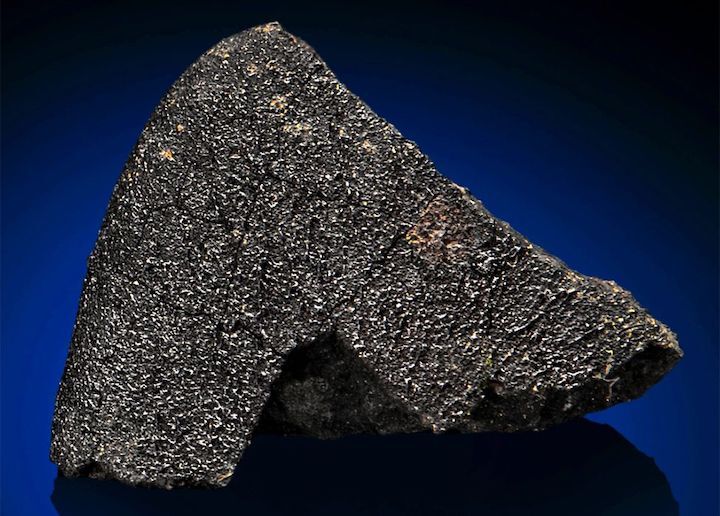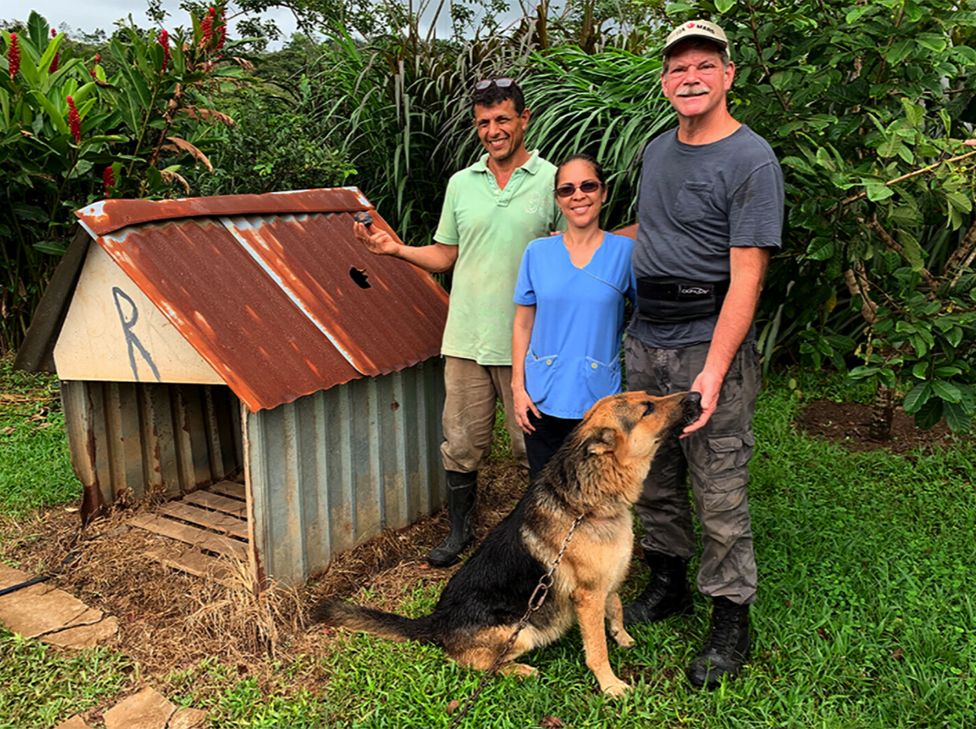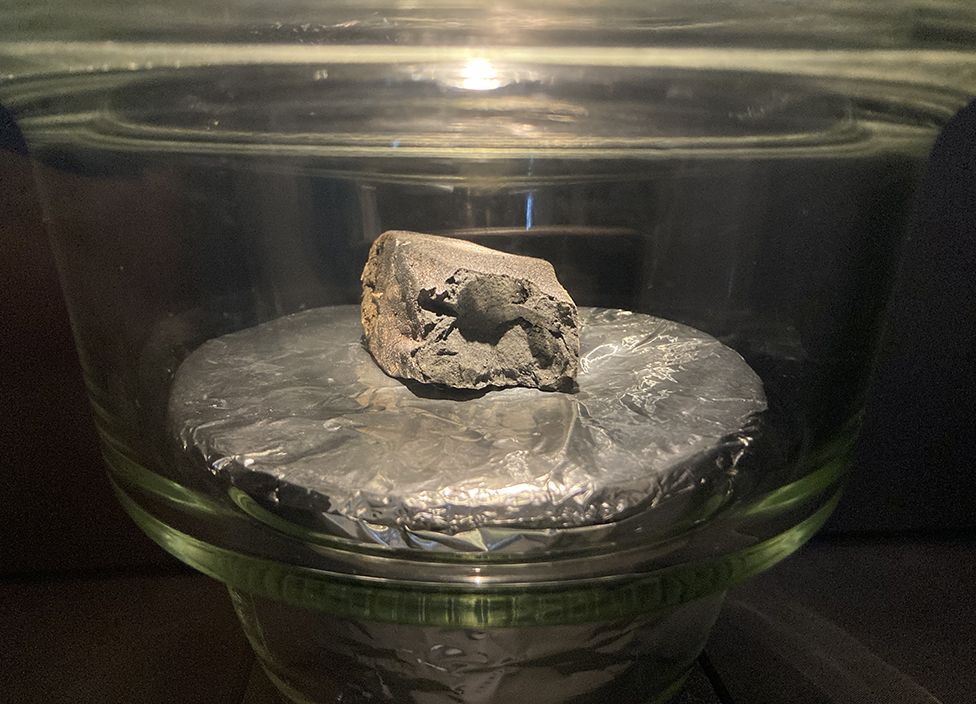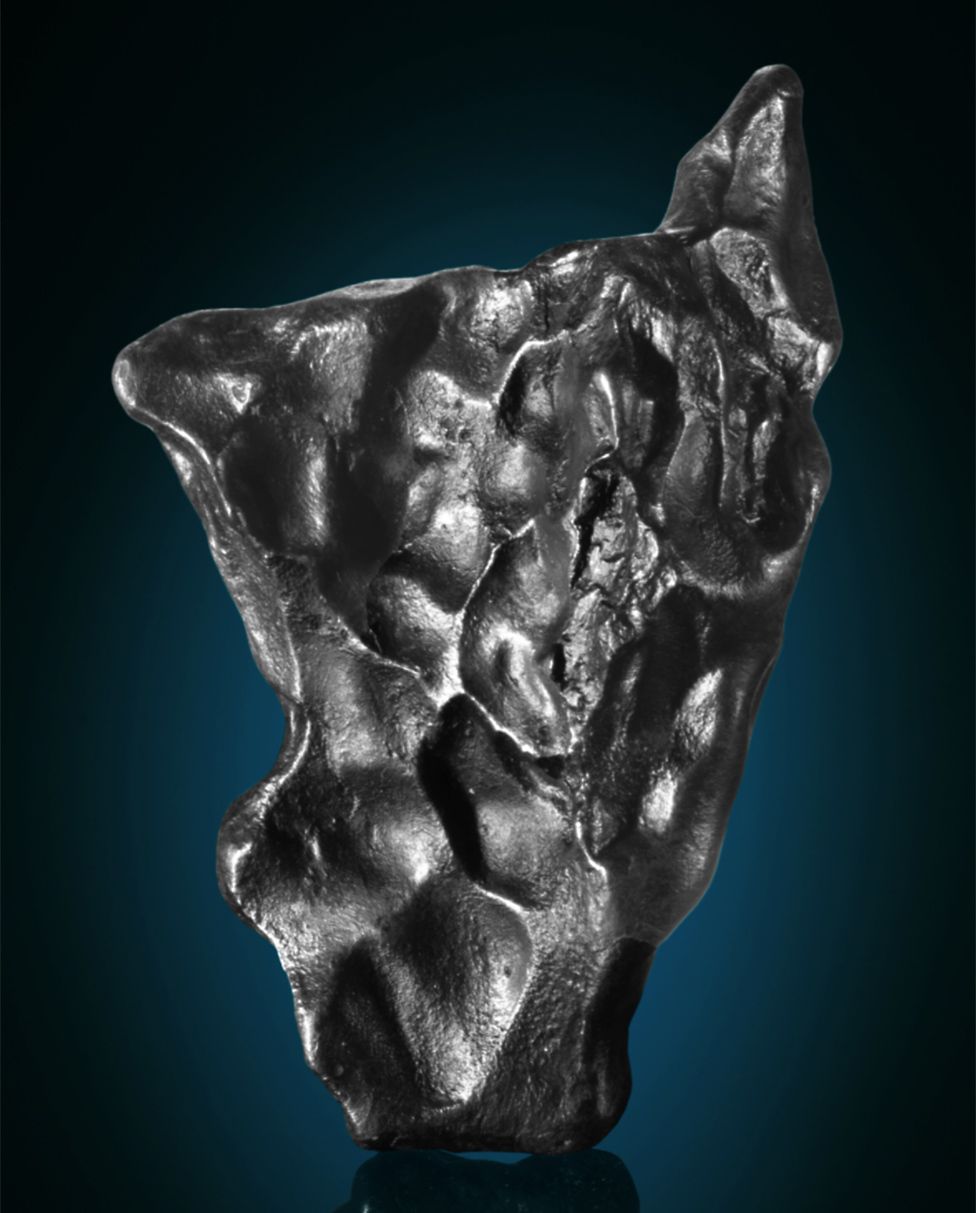25.02.2022

A bean-sized fragment of the meteorite that fell on the English town of Winchcombe last year has sold at auction for more than 120 times the value of its weight in gold.
The 1.7g chunk of blackened rock greatly exceeded its pre-sale estimate, fetching £9,256 ($12,600).
A second piece topped £20,000, although gram for gram its value was less.
Winchcombe is regarded scientifically as the most important space rock ever to be recovered in the UK.
It contains pristine chemistry from the formation of the Solar System.
Space rock from the Cotswold town was one of the star items at London auctioneers Christie's annual sale of rare and unusual meteorites.
 IMAGE SOURCE, CHRISTIE'S
IMAGE SOURCE, CHRISTIE'SSome lots greatly exceeded their pre-sale valuations, others did not.
Tiny shards from the meteoroid that exploded over the Russian city of Chelyabinsk in 2013 fetched nearly £3,000, more than double the estimate. Chelyabinsk is remembered for the spectacular streak of light in the sky that accompanied the incoming rock, and which was captured on countless vehicle dashcam recorders.
But a dog kennel hit by a meteorite in Costa Rica in 2019 disappointed auction spectators. It was expected to fetch perhaps £220,000. It went for a fraction of that at a little over £32,000. The stone that punctured a hole in the tin roof of Roky the German Shepherd's home garnered half as much again at £15,700.
And a rock blasted off the surface of Mars to later fall to Earth in northwest Africa failed to register even an opening bid. Just under £300,000 had been asked to get the sale under way.

It's a year almost to the day that thousands of people saw a fireball race across the skies of southern England.
The meteorite debris was eventually traced to the area in and around Winchcombe.
Residents swept up the charred remains from verges, gardens, driveways and local fields, and donated the material to the national collection in London's Natural History Museum (NHM).
They did so knowing they were giving up a potential windfall.
The thousand of pounds bid at Christie's on Wednesday for two small specimens only underscored that.
Scientists say Winchcombe is what's called a CM2 carbonaceous chondrite and will provide clues as to how the planets, including Earth, came into being more than 4.5 billion years ago.

The vast majority of what was collected in the vicinity of Winchcombe - over 90% of it - is now a public resource, available for researchers worldwide to study.
A 100g section of the meteorite is in a glass case at the NHM for visitors to view.
Christie's has been running a meteorite sale since 2014.
Many of the meteorites in this year's event came from the Macovich Collection whose curator, Darryl Pitt, has championed the beauty of these objects.
Some of them are truly stunning to look at. They are sculptures crafted by nature itself.
"Most meteorites are artefacts of the beginning of time; there are very few objects more alluring than a meteorite that is aesthetically sublime," he told BBC News.
 IMAGE SOURCE, CHRISTIE'S
IMAGE SOURCE, CHRISTIE'S
